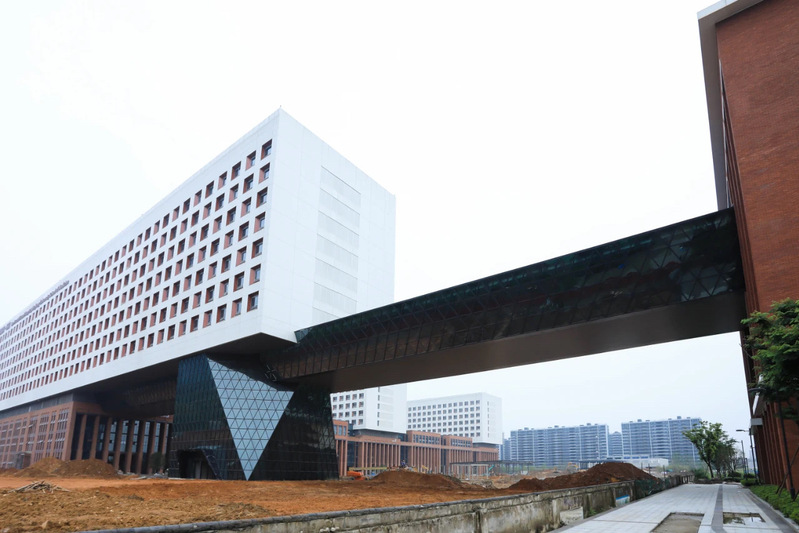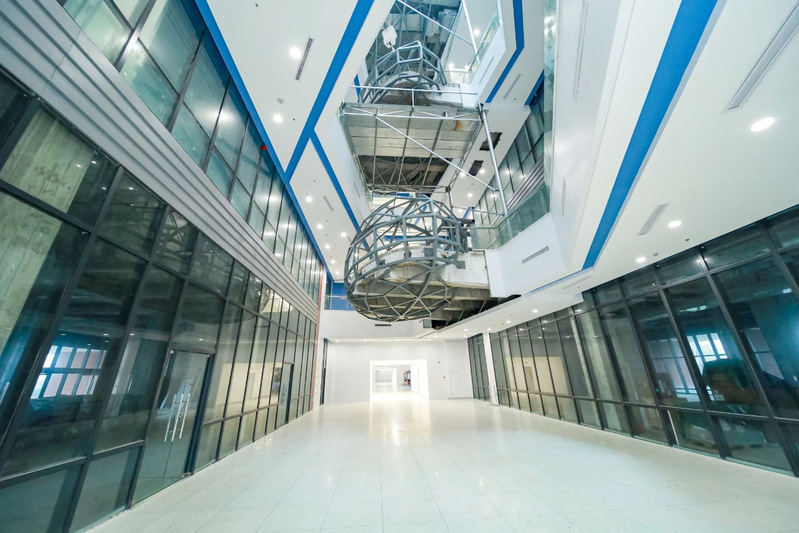Liangzhu Laboratory, aka Zhejiang Laboratory for Systems & Precision Medicine, was set up on July 17, marking the official launch of Zhejiang University Medical Center.

“Zhejiang University Medical Center will be committed to becoming a powerful magnet for talents from diverse disciplines and making medical breakthroughs focusing on new demands, technologies and paradigms,” said Prof. LIU Zhihong, Dean of the School of Medicine and Director of Zhejiang University Medical Center.
As a Chinese old saying goes, “It takes 10 years to sharpen a sword.” The medical center aims to become an innovative leader in science and technology in the domains of life and health, integrating “a diagnosis and treatment center for complicated diseases”, “a cradle of innovation for customized diagnosis and treatment technology”, and “an incubator for the health industry.”
“One of the underlying reasons why basic medicine and clinical medicine cannot be intimately linked lies in the fact that these two subjects don’t come under the same umbrella in terms of physical space, thus rendering it hard to make concerted efforts to pursue the same dream,” said Prof. XU Zhengping, Executive Vice Director of Zhejiang University Medical Center. The very aim of the newly-built medical center is to build a “dream space” for the fusion of basic medicine and clinical medicine.

The medical center will give priority to three diagnosis and treatment departments for difficult undiagnosed diseases, blood and autoimmune diseases and major mental disorders. Diagnosis and treatment of undiagnosed diseases is deemed as “the ultimate challenge to the human perception of diseases in medical fields”. For example, there are over 7,000 rare diseases in China. At a conservative estimate, there are more than 20 million patients. Because most of these diseases are unidentified, it is a formidable task to deliver appropriate therapy. Blood disorders pose a severe threat to health. For example, acute leukemia is the most lethal cancer among children and adults aged below 35 years. Researchers in blood and autoimmune diseases will concentrate on state-of-the-art cell therapy, including development of new immunocytes, a standardized high-efficiency fabrication system and clinical translation. Mental disorders are another major health hazard for human beings. In contrast with the high incidence rate of such mental disorders as depression, their clinical identification rate adds up to little more than 47.3% and current diagnostic methods are far off the mark. The Department of Major Mental Disorders will make concerted efforts in identification and therapy.
The foundation of precision diagnosis and treatment is the systematic analysis of healthcare information. A series of cutting-edge technologies, including supercomputing, cloud technology, machine learning and artificial intelligence, will open up new perspectives for us to gain a more insightful understanding of the complex human body.
What’s more, biotechnologies, such as gene editing, sing-cell analysis, multi-omic analysis, stem cell and cell engineering, immunotherapy, and disease simulation, have become increasingly sophisticated. With the aid of information technology, it is possible to integrate data at different levels by means of systematic analysis and gain a deeper understanding of life and diseases. The marriage between biotechnology and information technology is, so to speak, a natural outcome.
To illustrate this defining feature of the medical center, Prof. XU Zhengping cited the “new use of old drugs” as an example. Drugs have their own indications, and a drug used in clinical practice to treat Disease A may also produce a good effect on Disease B. There used to be no effective means for researchers to collect information on drug use, thereby unable to discover new functions in a timely manner. It can be a totally different story now. Researchers can employ big data to track the specific effects of drugs and thus explore new indications.
As a new multi-disciplinary research and development institution, the medical center will focus on the construction of an innovative medical ecosystem in the new era. High on the agenda are whole-chain R&D supporting facilities, the Future Medical Innovation Fund, professional services in medical translation, incubators and industrial parks.
The medical center is expected to become a special zone for talent and innovation where the intrinsic motivation of talents can be stimulated and each and every talent is willing to contribute all they can to medical research.
(From: ZJU NEWSROOM)

